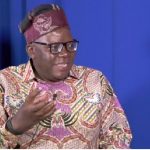 Four years ago, when I wrote a story about seeing a doctor and paying a consultation fee of the equivalent of 56 US cents, some of the Insider readers, used to the ridiculous prices and fees in Zimbabwe, said I had seen a bogus doctor.
Four years ago, when I wrote a story about seeing a doctor and paying a consultation fee of the equivalent of 56 US cents, some of the Insider readers, used to the ridiculous prices and fees in Zimbabwe, said I had seen a bogus doctor.
The consultation fee in Zimbabwe at the time was US$30. I had paid only 1 000 Tanzania shillings, the same price as a packet of fresh chips. The cost of visiting a Zimbabwean doctor was enough to buy myself chips every day for a month.
I pointed out, however, that this did not mean that the cost of seeing a doctor in Zanzibar, where I was, was cheap for an ordinary Tanzanian because they earned shillings and not United States dollars.
But since seeing a doctor cost the same as a packet of chips, I could only conclude that either the doctor was cheap or the chips were expensive.
Now that Zimbabwe is back to its own currency, Zimbabweans will seriously have to look at the pricing system in the country.
It has to be a collective effort which cuts across the political divide because prices are the same regardless of which political party one supports.
The enforcement of the Zimbabwe dollar as the legal tender for all local transactions also levels the playing field not just because people are not paid in United States dollars but also because the cost of goods in US dollars has gone up.
Finance Minister Mthuli Ncube said one of the reasons the government stepped in was that the country had a “situation whereby there were stable and affordable prices for the fortunate Zimbabweans who had access to dollars, and a paralysing high cost of living for the rest of the country”.
The ridiculous pricing system used by local business following the re-introduction of the Zimbabwe dollar is not only affecting those who are paid in Zimbabwe dollars but also those with access to foreign currency.
On Wednesday, I was told that a gel I wanted cost Z$39 or US$3. When I offered to pay in US dollars, the shop said this was now against the law. The black market rate for the US dollar had plunged to Z$4.50 cash and Z$7.50 electronic. This meant that the gel would cost me three times in US dollars. When I asked to swipe, I was told I had to pay Z$79, meaning that the gel would cost me US$10.
Now imagine a doctor asking for a consultation fee of Z$1 800. If s/he insists on cash that would translate to US$400. In electronic dollars this would still be US$240, that is, if the fee is not increased because one is swiping or paying by electronic money.
Zimbabweans have up to now generally been arrogant- panic buying when the price of goods goes up, shouting at those complaining about high prices to get out if they do not have money- but the local currency is likely to level the ground because there is a huge discrepancy between the US dollar rate used for pricing goods and the rate at which people cash their greenbacks.
Businesses will have to adjust their prices because the market will soon dry up. Even doctors will have to adjust because it will end up paying to see more patients paying a lower fee that a few patients paying high rates.
With some reports saying 90 percent of the transactions in the country are through electronic money, perhaps it is now time for Zimbabwe to adopt the policy in some developing countries, including South Africa, which have hefty charges on those who use cash.
After all, using electronic money reduces business costs and pilferage.
(365 VIEWS)


